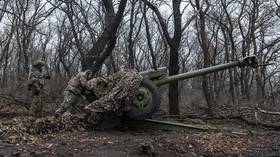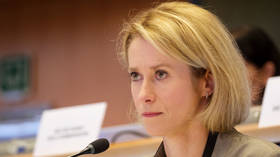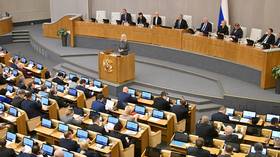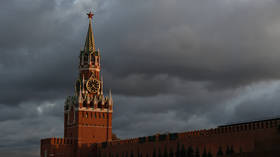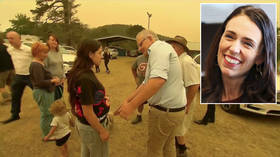Culprits or scapegoats? Australia faces outrage for decision to kill thousands of camels over climate
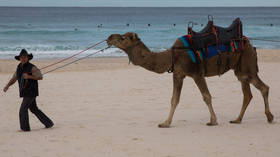
Australia’s decision to kill more than 10,000 camels by shooting them from helicopters has incensed animal-lovers on social media. But is it the only solution to dwindling water supplies and a warming planet?
Thousands of feral camels will meet their end on Wednesday during a planned cull in the province of South Australia, where a severe drought has caused them to invade communities in search of water, menacing residents and destroying property and native vegetation.
Also on rt.com For liberals, it’s more fun to blame climate change than arsonists for Australian fires – but arrests show it’s not so simpleAboriginal leaders in the Anangu Pitjantjatjara Yankunytjatjara (APY) Lands have authorized the five-day cull after an explosion in population of the animals. The drought has created conditions ideal for a cull, according to APY Lands manager Richard King, since the animals usually move around in smaller herds under normal conditions.
Camels can smell water from 5km away, according to King, and in such minuscule amounts that groups of them have been known to tear air conditioners apart in search of moisture. The animals can drink 200 liters of water in three minutes, making them a serious threat during the drought that has already caused over a dozen towns to run out of drinking water and created the conditions for one of the worst bushfire seasons in Australian history.
Carcasses of camels who have died – of hunger, thirst, or in a stampede to access water – have contaminated water sources and cultural sites. The government has highlighted methane emissions from their flatulence as a climate change issue, estimating it amounts to one ton of CO2 annually – about the same as adding 400,000 cars on the road. APY Lands has reportedly requested to be rewarded with carbon credits for the culling, though the Department of Energy and Environment does not include emissions from feral wildlife in its country’s emissions estimate.
Camels were brought to Australia in the 1800s as “beasts of burden” for exploration and construction and have multiplied since, with occasional cullings. Over a million currently call the continent home. While the camels had been traditionally mustered for sale in the west of the APY Lands, there are simply too many for the sellers to deal with at the moment – and not enough feed to sustain them for the three years it would take to sell the existing population off.
But the culling begins as ecologists estimate over half a billion animals have died in the bushfires still raging over much of eastern Australia. That figure rises to over a billion counting amphibians, bats, and invertebrates, and some fear the inferno may have spelled the end for entire species. Over a third of Kangaroo Island, described as Australia’s answer to the Galapagos for its wealth of unique animals not found elsewhere, has been completely burned. While Australia experiences a yearly fire season, some have blamed the destructiveness of this year's bushfires on climate change, while others have pointed to nearly 200 arsonists arrested for starting the fires.
Social media users took the Australian authorities to task for “blaming the camels” and expressed shock that after so many animals lost, they would throw more away.
So the Australian government is now blaming CAMELS for the fires all over the country, and plans on killing 10,000 of them. I swear, humans would probably blame unicorns before accepting that it's our fault.
— Connor Anderson Ⓥ (@C_Anderson1998) January 7, 2020
“More than 10,000 camels to be shot because they drink too much water.” Absolutely awful and this is not a sustainable solution! #Australia has suffered massive animal loss & their proposed solution is to shoot 10k camels?! 💔 https://t.co/L9ZM99RPxw
— Kristen Ruby (@sparklingruby) January 7, 2020
Others remarked on the devastation caused by humans – not camels – to the planet.
So much that’s wrong with the way humans live on this beautiful planet hinges on believing it and all the other life on it is “ours” to do what we want with, and now the response to the damage that approach has wrought is more of the same. Just sickening.https://t.co/qR68wMsK3Q
— Summer Anne Burton (@summeranne) January 7, 2020
As the Australia burns and over 500 million animals already dead, it is planning to shoot down the camels as they search for water. I mean WTF!!!!..This is very very serious and should concern us all...Humans has done a lot of damage to this planet. This madness MUST STOP!! pic.twitter.com/9o4tSJ1frg
— An Open Letter (@AnOpenLetter001) January 7, 2020
And some pointed out that Australia has never taken the best care of its animals.
SORRY to say but Australia getting sympathy for all the animals in danger Coz of fire.But whn nature is NOT being harsh that time Aus was always harsh towards Animals.Even NOW they ARE. Hypocrisy. What wrong hv these Camels done? What wrong did Kangaroos do when thr was NO fire? pic.twitter.com/9ixLm1y7zb
— Nitu (@nitu_butterfly) January 7, 2020
Alternate solutions suggested ranged from local – spay and neuter – to global – deport them to Saudi Arabia/Somalia/Kenya. Australia actually does ship some camels to Saudi Arabia.
They Should just Deport our Camels to Kenya and Somalia. We need them. This is Terrorism for God's sake!! #SouthAustralia . https://t.co/Tkontga6ta
— Amb. Maryam Omar. (@YWC_2011) January 7, 2020
Geez, first they want to murder a million cats and now it's thousands of camels slaughtered. Really? Humans don't spay and neuter to control animal populations so the answer is to murder them. Camels aren't native to Australia, how did they get there. #camel
— Rose Carr (@Rosematuse) January 7, 2020
But none of these solutions are immediate, and meanwhile, South Australian communities remain besieged.
Like this story? Share it with a friend!



